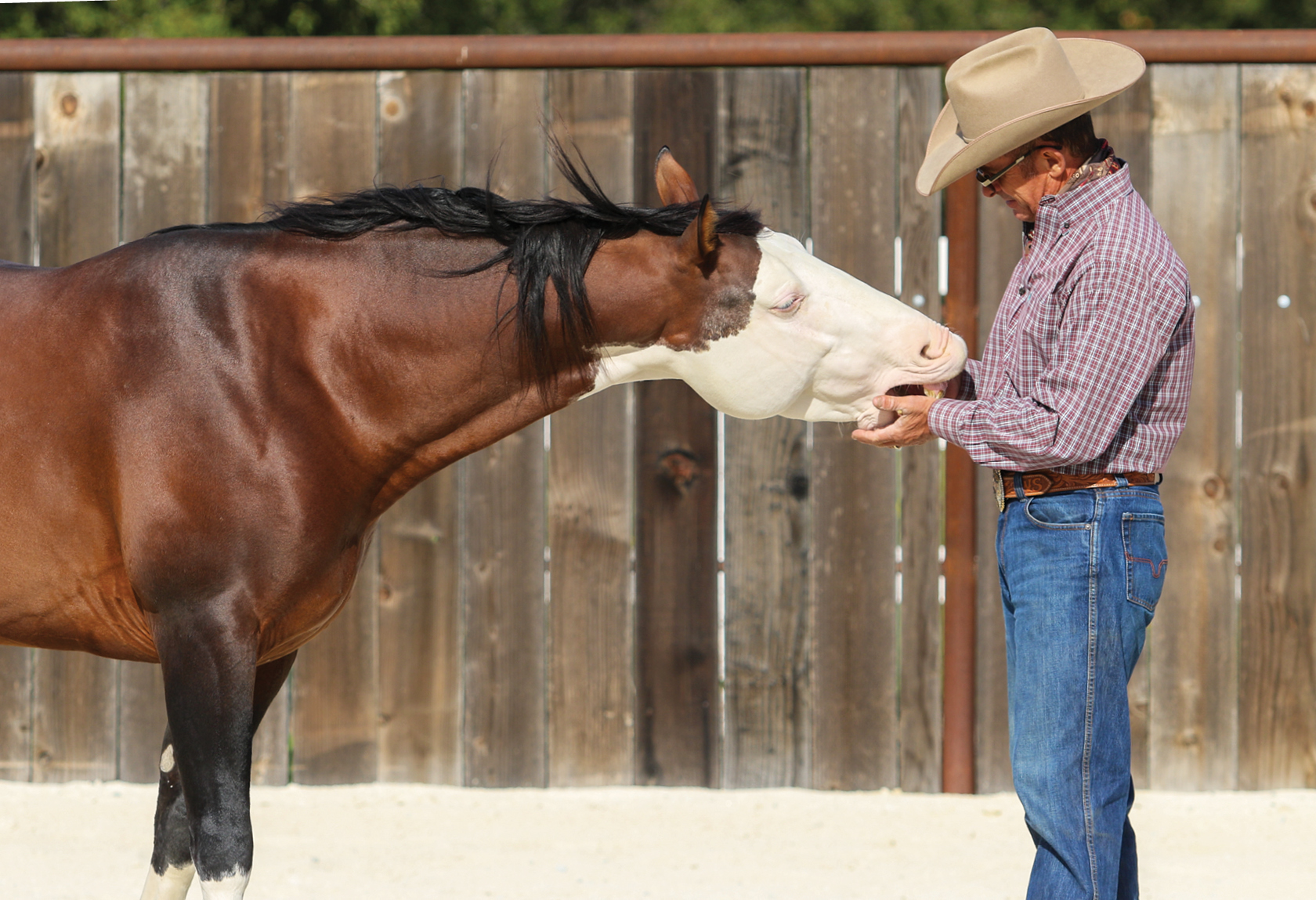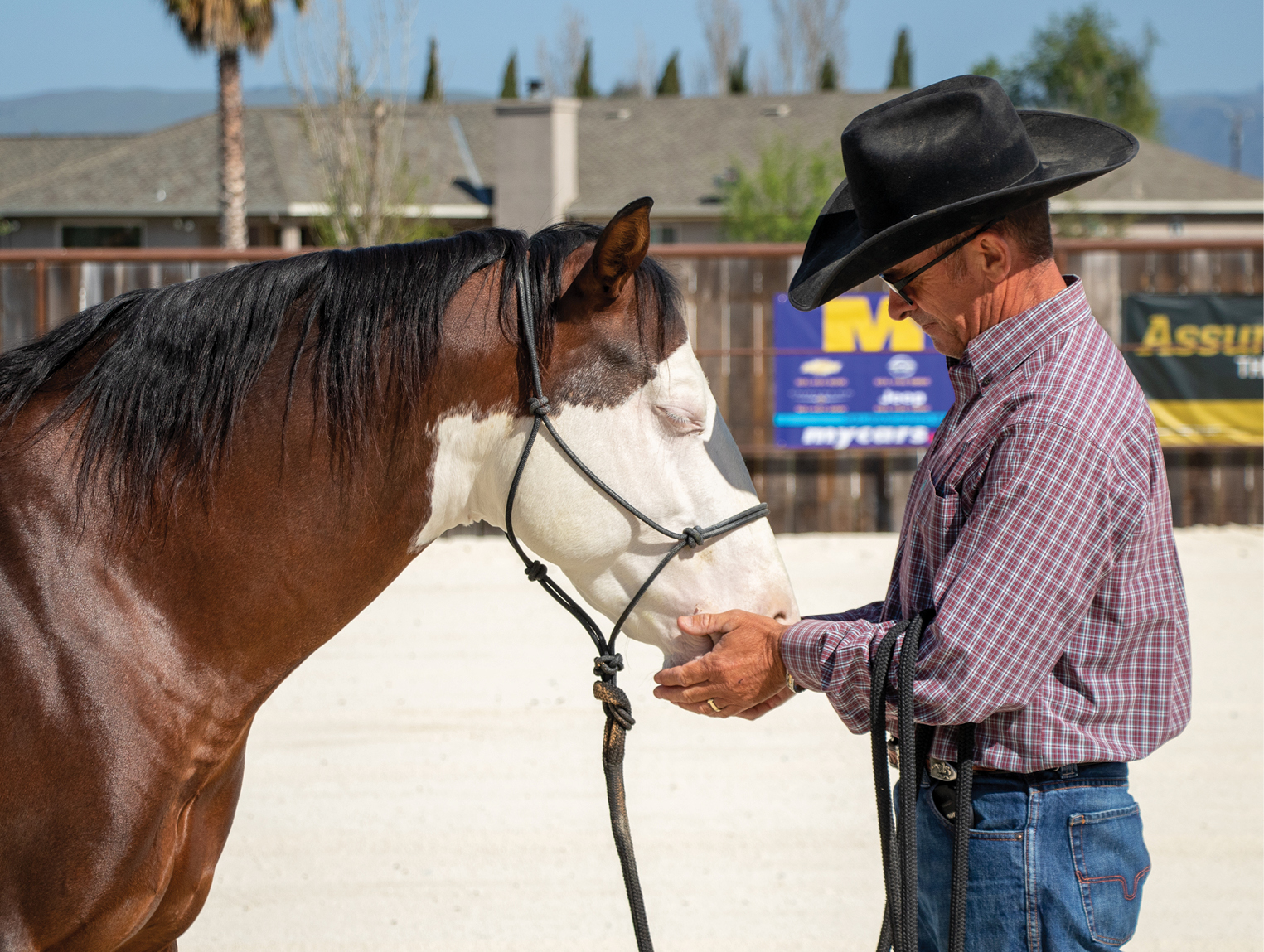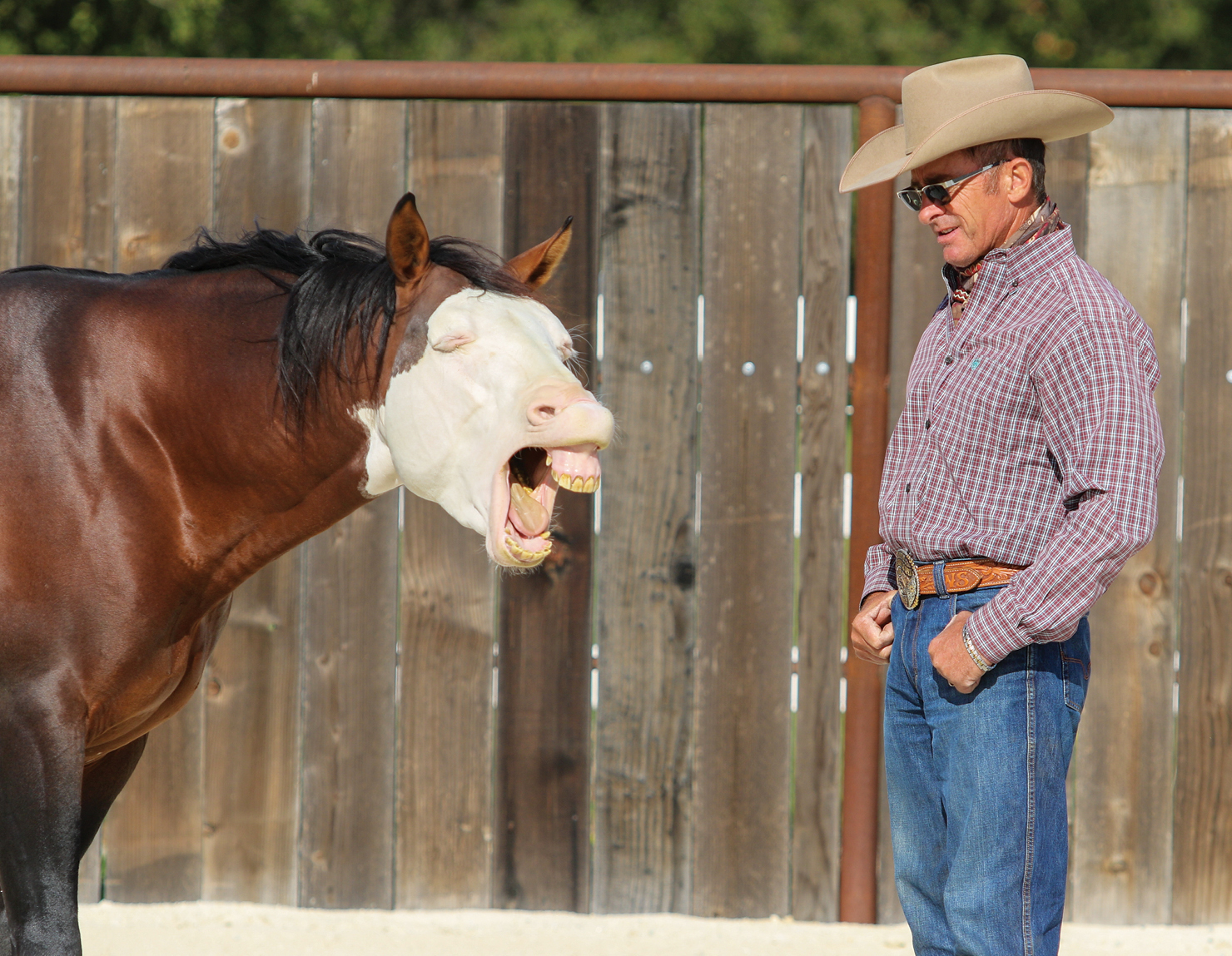As you go to saddle your horse, he reaches around with his muzzle. Just when you think he’s curious and looking to see what you’re doing, you turn your body away and feel his teeth sink into your arm. You know your horse isn’t experiencing any pain, and it didn’t appear that your horse was being aggressive toward you, so why did he bite?
Here I’ll explain why your horse is nipping at you, and then show you how you can prevent biting and build a better relationship with your horse in the process.
Why Is He Mouthy?
Often when your horse is mouthy or tries to bite, he isn’t aiming to hurt you. He’s actually trying to engage with you. If you watch your horse in the pasture with his playmates, you’ll notice that he may interact with other horses by using his mouth. This is because when a horse is curious and wants to engage with something, he usually does so with his mouth and lips to investigate and as if to say, “Hey, pay attention to me.”
If you’re not paying attention and your horse is trying to engage with you, he may start to nibble at you to get your focus back on him. At this point, his biting isn’t mean or meant to be aggressive, but it can turn into a dangerous habit if you don’t address the problem immediately and try to fix this behavior.

1. Engage with Your Horse
Head to your horse’s pen with a halter, lead rope, and a flag. If your horse tries to bite before you’re able to put his halter on, drop the halter, lead rope, and flag and simply stand a few feet away from him.
As he brings his head toward you, place your hands together in a bowl shape with your two pinkies touching, and hold them 4 to 6 inches from your body. If your horse moves his head down toward your knees or up to your shoulders, follow with your hands. They’ll act as barrier between his muzzle and your body. When he finally gets to your hands, start to gently rub the end of his muzzle. If your horse already has a habit of biting you to get your attention, it’s important to be cautious of where your hands are in relation to his teeth.
If your horse moves his head away from you, let him. Don’t seek out engagement—you want him to willingly engage with you. When he’s finally ready to engage with you, be ready to engage with him. You need to support him and let him know you’re aware of how he’s feeling.

2. Keep the Distance
If your horse begins to walk toward you during this exercise, put his halter on, and stand with your lead rope in one hand and the flag in the other. When his body comes closer, then it becomes dangerous as he becomes pushy and loses respect for your space, so you need to stop engaging with him. If your horse wants to engage with you, he needs to be standing in place with his neck extended.
When your horse steps forward and his head and neck are no longer stretched out, it’s time to create energy. Start bouncing on the balls of your feet, then create energy by waving your flag in the air. However, you’ll want to avoid waving it directly at him.
Continue creating energy until he looks at you and relaxes, then stop. While you’re physically creating distance between you and your horse, it’s more about him being aware of you and where you are.
Your goal is to have him bring his focus back to you and to respect your personal space.

3. Find the Release
Once you’re able to safely engage with your horse, continue this drill until he starts to yawn and release tension—the more you engage with him, the more he’ll relax and reset his nervous system as you’re providing the connection that he’s seeking.
This exercise is something you can practice with your horse any time he brings his head around to you; just be prepared to cup your hands and engage with his muzzle (from the corner of his mouth to his nostril and below). If you attempt to engage with him by rubbing his cheek, he might interpret that interaction as play and that’s not the interaction he’s seeking from you.
When you first start working with your horse, his reactions may temporarily get worse. While the two of you are trying to figure out how to engage and communicate, he may nip more until he understands what you’re asking him. By continuously engaging with him when he seeks out engagement, his biting habit will disappear and rubbing his muzzle will become a relationship builder between you two.






